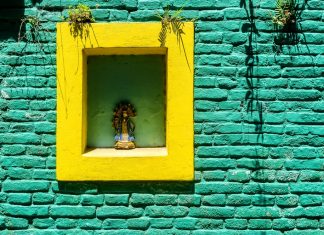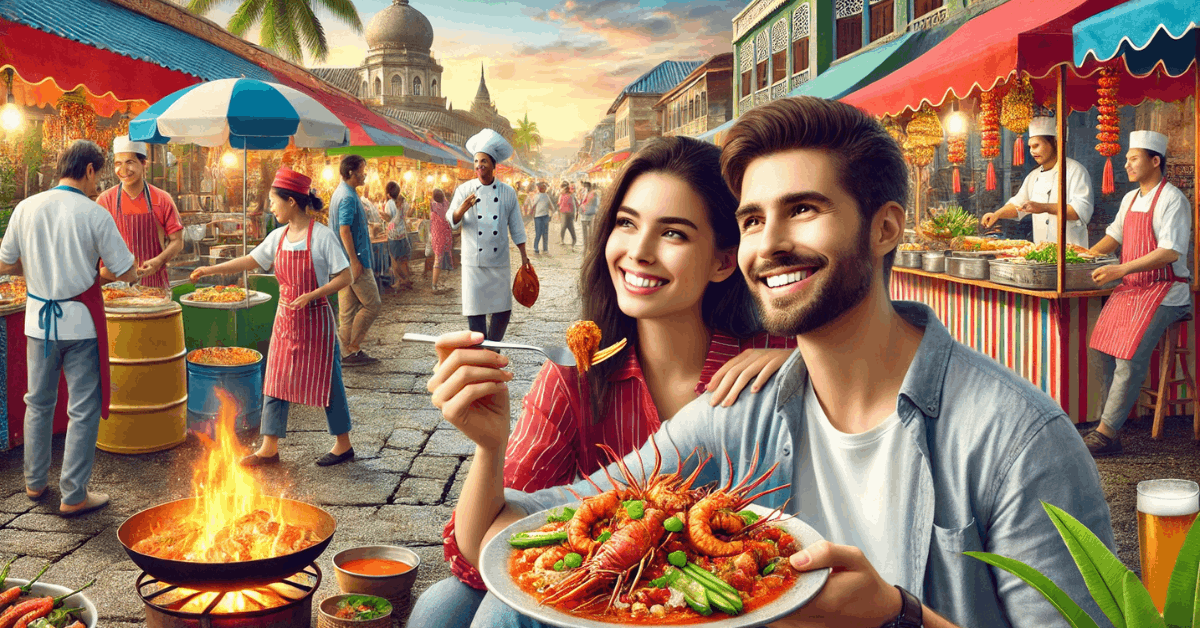Chinese culture clothing is more than just a fashion statement. It's a way to connect with a rich and fascinating cultural heritage that dates back thousands of years.
In this article, we'll explore the value of investing in Chinese cultural clothing, not just as a means of enhancing your wardrobe but as a way to support preserving and continuing a unique cultural tradition. We'll highlight the importance of investing and spending money wisely through insightful quotes and analogies.
So join us as we journey through the world of Chinese cultural clothing and discover why it's a wise investment for anyone who values beauty, tradition, and authenticity.
History of Chinese Culture Clothing
The history of Chinese culture clothing is a reflection of its rich cultural heritage. From ancient times to the modern-day, Chinese clothing has been influenced by various factors, including social status, climate, and religion.
Investing in Chinese clothing is about adding to your wardrobe and connecting with a cultural legacy that has stood the test of time.
Evolution of Chinese Clothing Throughout History
The evolution of Chinese clothing throughout history is a fascinating reflection of its rich cultural heritage. From the earliest known Chinese dynasties to the modern-day, the style and design of Chinese dress have been influenced by various factors, including social status, climate, and religion.
In ancient times, the clothing worn by the ruling class was often elaborate and ornate, with luxurious materials such as silk and gold embroidery. On the other hand, the common people wore simpler garments made from materials such as hemp and cotton.
Over time, Chinese clothing evolved to reflect changing societal norms and political upheavals. During the Tang dynasty, for example, clothing became more form-fitting, with wide sleeves and high collars. The Song dynasty saw a return to more conservative and practical styles, with clothing becoming looser and more comfortable.
During the Ming and Qing dynasties, clothing became increasingly complex and elaborate, with intricate embroidery and detailed accessories such as headdresses and jewelry.
However, with the advent of the Republic of China in the early 20th century, Chinese clothing underwent a significant transformation, with more Western-style clothing becoming popular.
Today, Chinese clothing continues to evolve and adapt to modern trends and influences while retaining traditional design and style elements. Investing in Chinese clothing is not only a way to enhance your wardrobe but also a means of connecting with a rich cultural legacy.
The Chinese proverb says, "A thing of beauty is a joy forever." Investing in Chinese clothing means you're not just purchasing a garment but a piece of history and culture. Join us as we continue to explore why investing in Chinese cultural clothing is a wise and valuable choice.
Description of the Different Styles and Designs of Chinese Clothing
Chinese cultural clothing is a unique and fascinating reflection of its rich heritage. From the traditional Hanfu to the modern Zhongshan suit, Chinese clothing has a long and diverse history that showcases intricate designs and rich symbolism.
Here are some of the different styles and designs of Chinese clothing, along with their history and significance.
- Hanfu - is the traditional dress of the Han Chinese people and is characterized by its loose, flowing lines and simple, elegant designs. It has a long history and is often seen as a symbol of Chinese culture and tradition.
- Qipao/Cheongsam - is a form-fitting dress with a high collar and side slits, often made from silk or other luxurious materials. It's a popular style of Chinese clothing adapted to modern fashion trends while retaining its classic elegance.
- Tangzhuang - is a traditional Chinese jacket with a mandarin collar and frog buttons. It's often worn with loose-fitting pants and has a casual yet stylish appearance. It's a versatile style that can be dressed up or down, depending on the occasion.
- Zhongshan suit - is a modern style of men's suit named after Sun Yat-sen, also known as the Mao suit. It's a practical and comfortable style that has become popular in China and other parts of the world. It's an excellent choice for formal events or business meetings.
- Pienfu - is a two-piece dress consisting of a tunic and a skirt. It was popular during the Tang and Song dynasties and is often seen as a symbol of traditional Chinese femininity. It's a beautiful and elegant style that's perfect for special occasions.
- Magua - is a jacket with a stand-up collar and frog buttons. It's often made from thick, heavy materials and is famous for colder weather. It's a practical and stylish style perfect for casual and formal occasions.
- Aoqun - is a long gown with loose sleeves, similar to a robe. It's often made from silk or other luxurious materials and has a simple yet elegant appearance. It's a popular style perfect for special occasions or formal events.
- Shenyi - is a long robe with a crossed collar and wide sleeves. It was popular during the Ming and Qing dynasties and is often seen as a symbol of traditional Chinese culture. It's a beautiful, elegant style perfect for formal events or weddings.
- Changshan - this is a long gown with a high collar and buttons down the front. It's a traditional style that has been adapted to modern fashion trends. It's a popular choice for formal events or business meetings and is often worn with a tie or bowtie.
- Moxiong - this is a type of traditional Chinese lingerie worn by women. It's often made from silk or other luxurious materials and has a simple yet elegant appearance. It's a popular style perfect for special occasions or romantic evenings.
- Dunhuang - is a traditional style of clothing originating from the city of Dunhuang, located on the ancient Silk Road in China. The dress is characterized by its loose and flowing designs, emphasizing comfort and simplicity.
Chinese Culture Clothing Costumes
Chinese culture clothing costumes represent cultural identity and are worn during special events and ceremonies such as weddings and festivals. These stunning designs reflect the rich symbolism and historical significance of Chinese culture.
In this section, we'll examine the traditional costumes worn during these events, exploring the materials and techniques used to create these magnificent works of art.
The Traditional Costumes Worn During Special Events and Ceremonies
Chinese clothing costumes are an essential part of Chinese cultural heritage, with each piece representing a rich history and tradition. These costumes are not only beautiful but also significant in their symbolism and meaning, worn during special events and ceremonies.
Let's explore some of the traditional costumes worn during special events and ceremonies in China and learn more about the significance and history behind each one.
- Dragon and Phoenix Costumes - worn during weddings, these costumes represent the union of two people and symbolize good fortune and prosperity. The dragon represents the groom, while the phoenix represents the bride, with both costumes featuring intricate embroidery and stunning details.
- Lion Dance Costumes - often seen during festivals and celebrations, these costumes are worn during the traditional lion dance, a popular Chinese performance art. The costumes are brightly colored and adorned with fur and are meant to represent the mythical creature of the lion, a symbol of strength and courage.
- Opera Costumes - are elaborate, colorful, and worn during traditional Chinese theater performances. They are made with rich fabrics, intricate embroidery, and detailed accessories, with each costume representing a different character in the story. The designs reflect the character's personality and role in the play.
- Imperial Robes - were worn by Ming and Qing dynasty emperors, featuring luxurious materials such as silk and intricate embroidery. These robes symbolized the emperor's power and authority and were worn during essential state ceremonies. Each design had specific colors and patterns that held significant meaning.
Investing in Chinese culture clothing costumes is a way to add beauty and uniqueness to your wardrobe and a means of celebrating and preserving a rich cultural heritage that has stood the test of time.
Description of the Materials and Techniques Used to Make Chinese Costumes
Chinese costumes express Chinese culture and history, with each piece reflecting a unique story and significance. The materials and techniques used to create these garments are intricate and highly skilled, focusing on precision and attention to detail.
Here are the different materials and techniques used to create Chinese costumes.
- Silk - is a popular material used in Chinese costumes due to its luxurious texture and ability to hold vibrant colors. It is often embroidered with intricate patterns or designs that reflect the costume's significance and symbolism.
- Embroidery - is a common technique used in Chinese costumes, where threads are stitched onto the fabric to create intricate patterns or designs. It is often done by hand and requires high skill and precision.
- Brocade - a type of fabric woven with raised patterns or designs. It is often made from silk or other luxurious materials and is commonly used in Chinese costumes due to its ornate and elegant appearance.
- Knotting - is a technique used in Chinese costumes where cords or threads are knotted together to create intricate patterns or designs. It is often used in accessories such as tassels and in the costumes themselves.
Each material and technique used in creating Chinese costumes requires high skill and craftsmanship. The result is a stunning garment that reflects Chinese cultural heritage and represents the artistry and skill of the craftsmen who created it.
The Symbolism and Meaning Behind the Designs
Chinese costumes are not only beautiful but also rich in symbolism and meaning. Each design element has its significance and is often tied to Chinese cultural beliefs and traditions. In this article, we'll explore some of the most common design elements found in Chinese costumes and learn more about the symbolism and meaning behind each one.
- Dragons - are a common design element in Chinese costumes and are often associated with power, strength, and good luck. The dragon is an emperor symbol in Chinese culture and is often used to represent the ruling dynasty.
- Phoenixes - are another popular design element in Chinese costumes and are often associated with beauty, grace, and prosperity. The phoenix is a symbol of the empress in Chinese culture and is often used to represent the feminine aspect of power.
- Flowers - are a common design element in Chinese costumes and are often used to represent different virtues or qualities. For example, the lotus flower represents purity and enlightenment, while the peony represents wealth and prosperity.
- Colors - are also used in Chinese costumes to convey specific meanings. Red, for example, is associated with good luck and happiness, while gold represents wealth and prosperity.
Investing in a Chinese costume is a way to add beauty to your wardrobe and a means of celebrating and preserving a rich cultural heritage. By understanding the symbolism and meaning behind the designs, you can gain a deeper appreciation for these stunning garments and the cultural beliefs they represent.
Curiosities of Chinese Culture Clothing
Chinese cultural clothing is rich in history and tradition and full of curiosities and fascinating details. From unique fabrics and accessories to surprising design elements and hidden meanings, Chinese clothing offers many exciting and unexpected features.
In this section, we'll explore some of the most intriguing curiosities of Chinese cultural clothing, offering insight into the artistry, symbolism, and cultural significance behind these stunning garments.
The Different Accessories and Adornments Worn With Chinese Clothing
Chinese clothing is known for its intricate designs and rich symbolism, and the unique accessories and adornments accompanying each garment. From ornate hairpins and jewelry to intricate embroidery and tassels, these accessories add artistry and detail to Chinese clothing that is unmatched by any other culture.
Let's explore some of the most common accessories and adornments worn with Chinese clothing, and learn more about the history, symbolism, and craftsmanship behind each one.
- Hair ornaments - are a common accessory worn with Chinese clothing, and include hairpins, combs, and other decorative pieces. They are often made from jade, ivory, or gold materials and may feature intricate designs or motifs.
- Tassels - are a decorative element commonly found on Chinese clothing, and are often made from silk or other fine materials. They may be used as a decorative accent on apparel or accessories or as a symbol of good luck and prosperity.
- Embroidery - is a common technique used in Chinese clothing and is often used to create intricate designs or patterns on clothing and accessories. It may feature images of flowers, animals, or other symbolic elements and is usually done by hand with great skill and precision.
- Jewelry - is often worn with Chinese clothing, and may include necklaces, bracelets, and earrings. It may be made from materials such as jade, pearls, or gold and feature intricate designs or symbols reflecting Chinese cultural beliefs and traditions.
Each accessory and adornment worn with Chinese clothing reflects this unique and fascinating culture's artistry, craftsmanship, and cultural significance. By understanding the history and symbolism behind these accessories, we can gain a deeper appreciation for the beauty and richness of Chinese clothing.
Also read: What to Do in Japan? 9 Amazing Places to Visit
The Influence of Chinese Clothing on Modern Fashion Trends
Chinese clothing has a long and rich history spanning thousands of years, and its influence can still be seen in modern fashion trends. From the elegant cheongsam or qipao dress to the contemporary interpretations found in Shein's Asian dress collection, Chinese fashion has captured the hearts of fashion enthusiasts worldwide.
One of the reasons for this enduring popularity is the timeless elegance of Chinese clothing designs. The clean lines, rich fabrics, and intricate embroidery of traditional Chinese clothing lend themselves well to modern interpretations, offering a fresh and unique take on classic fashion styles.
Chinese clothing stores online also offer a convenient way for fashion lovers to access these designs and incorporate them into their wardrobes. By blending the traditional with the contemporary, Chinese fashion has become a global phenomenon, inspiring designers and fashion enthusiasts to embrace its beauty and elegance.
Ultimately, the influence of Chinese clothing on modern fashion trends is a testament to its enduring appeal and timeless elegance. By embracing these designs and incorporating them into our wardrobes, we can pay homage to the rich cultural heritage of China and celebrate its lasting contributions to the world of fashion.
Description of the Role of Chinese Clothing in Contemporary Culture
In contemporary culture, Chinese clothing has become a symbol of elegance and sophistication. Many designers and fashion brands incorporate Asian-inspired dresses and traditional Chinese dress designs into their collections. These designs are often a nod to the rich cultural heritage of China and reflect the enduring appeal of its timeless fashion styles.
Chinese dress designers have also played a significant role in the rise of Chinese fashion in modern culture, bringing traditional designs into the spotlight and infusing them with a modern twist. Their creativity and innovation have helped reinvigorate interest in Chinese clothing, making it a sought-after style in the fashion world.
Asian-inspired dresses have also become popular among fashion enthusiasts, offering a unique and exotic take on traditional Western fashion styles. These dresses often incorporate elements of Chinese fashion, such as intricate embroidery, rich fabrics, and elegant silhouettes, offering a fresh and exciting take on contemporary style.
Overall, the role of Chinese clothing in contemporary culture is one of enduring appeal and timeless elegance. From the traditional designs of Chinese dress designers to the modern interpretations found in Asian-inspired dresses, Chinese fashion continues to capture the hearts and imaginations of fashion lovers worldwide.
Investing in Chinese Culture Clothing
Investing in Chinese cultural clothing can be a prudent decision for several reasons. The incorporation of casual Chinese clothing provides a unique and exotic alternative to Western fashion styles, offering a sense of sophistication and refinement to any wardrobe.
For weddings, Chinese bridesmaid dresses offer a modern interpretation of traditional bridal fashion, garnering attention and admiration.
Moreover, red Chinese New Year dresses are an everlasting and iconic addition to any collection, representing good fortune and prosperity in Chinese culture. Investing in these types of Chinese clothing showcases fashion and cultural significance, a valuable investment for any individual seeking to expand their fashion repertoire.
Furthermore, Chinese cultural clothing is crafted with skilled expertise and high-quality materials, ensuring durability and longevity. Investing in these pieces is a smart choice as they are not only fashionable but also possess the potential to last for several years.
In conclusion, investing in Chinese cultural clothing is a wise decision, enriching any wardrobe with sophistication and cultural value. Whether casual Chinese clothing, Chinese bridesmaid dresses, or red Chinese New Year dresses, these garments offer a timeless style and cultural significance.
Embracing these designs, individuals can pay homage to the rich Chinese cultural traditions and enjoy their enduring appeal for years.
Advantages of Investing in Chinese Clothing as a Means of Supporting Cultural Preservation
Chinese clothing is more than just a fashion statement. It is an embodiment of the country's rich cultural heritage and traditions. Investing in Chinese clothing not only adds to an individual's fashion repertoire but also supports the preservation of the country's cultural identity.
With unique fashion styles, high-quality materials, and cultural significance, Chinese garments have become increasingly popular in modern fashion trends. Let's explore the advantages of investing in Chinese clothing to support cultural preservation.
- Cultural Preservation: investing in Chinese clothing supports the preservation of cultural heritage and traditions. By doing so, individuals can play a role in preserving an integral part of Chinese culture, which might otherwise be lost.
- Unique Fashion Style: it offers a refreshing and unique style that differs significantly from Western fashion. With their elegant designs, rich colors, and intricate patterns, Chinese garments make an exquisite addition to any wardrobe.
- High-Quality Materials: it is often made from high-quality materials, ensuring longevity and durability. Each fabric is carefully selected from silk and satin to cotton and linen to ensure the garment lasts long.
- Cultural Significance: each Chinese garment has cultural significance, reflecting the country's rich history and traditions. These garments are not just beautiful to wear, but they also symbolize the values and beliefs of Chinese culture.
- Symbolic Meanings: it often features intricate designs and colors, representing different meanings and values in Chinese culture. For example, red is associated with good luck and happiness, while the dragon symbolizes strength and power.
- Investment Value: it can provide value over time, as it can appreciate and become rare or hard to find. With their unique designs, historical significance, and cultural value, Chinese garments are a valuable investment for those seeking to expand their fashion collection and support cultural preservation.
Other Types of Chinese Clothing Available for Purchase
In addition to the traditional Chinese clothing and costumes steeped in cultural significance, many other types of Chinese clothing are available for purchase. These modern adaptations of traditional styles incorporate Chinese cultural elements while catering to contemporary fashion trends.
This section will explore various types of Chinese clothing available for purchase, from casual streetwear to formal attire.
- Infant Chinese New Year Outfit - these outfits typically consist of a bright red onesie, shirt, and pants, symbolizing good luck and fortune for the child's future.
- Ming Coat - a long, loose-fitting coat with a Mandarin collar that officials wore during the Ming Dynasty. These coats often feature intricate embroidery and are made from high-quality materials.
- Chinese Collar Dress Shirt - a modern adaptation of the traditional Chinese collar shirt, these dress shirts feature a Mandarin collar and are often made from lightweight, breathable materials.
- Lunar New Year Dresses - are often brightly colored and feature auspicious symbols and designs, such as the zodiac animal of the current year. They are worn during Lunar New Year celebrations and symbolize good luck and fortune for the coming year.
- Tang Suit Wedding - a wedding where the groom and bride wear Tang Suits as their wedding attire. Tang Suits are a traditional Chinese jacket that features a Mandarin collar and frog button closures. They are often made from high-quality materials such as silk or brocade and have become popular in modern fashion trends.
- Shein Chinese Clothing - Shein is an online clothing retailer that offers a wide range of Chinese-inspired clothing, from casual streetwear to formal attire. They often feature traditional Chinese designs and patterns, allowing customers to incorporate Chinese culture into their wardrobes.
Tips for Investing in and Caring for Chinese Clothing
Investing in Chinese clothing can be a great way to appreciate and support Chinese culture. However, it's essential to properly care for these garments to ensure their longevity and continued beauty. Here are some tips for investing in and managing Chinese clothing.
- Research the materials and techniques used to make the clothing before purchasing to ensure authenticity and quality.
- Follow the care instructions carefully, as many traditional Chinese fabrics require special handling.
- Consider investing in a garment bag or storage box to protect the clothing when not in use.
- Avoid direct sunlight and damp areas to prevent discoloration and damage when storing Chinese clothing.
- Consider having any repairs or alterations done by a professional with experience in working with traditional Chinese clothing.
- Consider purchasing from reputable sellers or boutiques to ensure the authenticity and quality of the garment.
- Be mindful of the materials used in the clothing and their care instructions. Some materials may require special care, such as hand-washing or dry-cleaning.
- When storing Chinese clothing, avoid hanging them on regular hangers as they may stretch or damage the fabric. Consider using padded hangers or folding the garments instead.
- If investing in a traditional Chinese wedding dress or formal attire, consider customizing it to ensure the perfect fit and personalized details.
- Mix and match Chinese clothing with modern pieces to create a stylish, unique outfit. Pair a qipao dress with a leather jacket, or wear a tang suit jacket with jeans for a modern twist on traditional attire.
Remember, investing in Chinese clothing is a way to support cultural preservation and investment in high-quality and unique garments that can be treasured for years with proper care.
Conclusion
Chinese cultural clothing is more than just a form of attire; it celebrates cultural heritage and tradition. The various styles, designs, and accessories used in Chinese clothing carry deep symbolism and meaning that reflect Chinese culture's rich history and values.
Investing in Chinese clothing not only supports the preservation of cultural heritage but also allows us to appreciate the beauty and elegance of these garments. It is a valuable investment that can be passed down to future generations.
Let us continue to celebrate and embrace the beauty of Chinese cultural clothing and preserve this vital aspect of our shared human history.

















